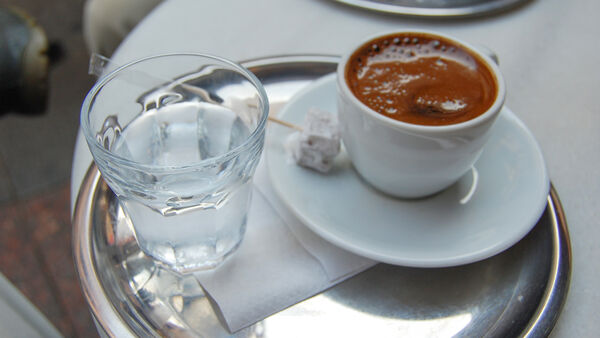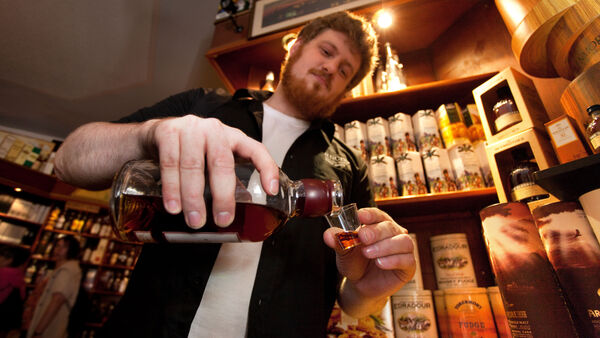Drink Like a European


By Rick Steves
We all need to stay hydrated every day, no matter where we are — so what could there be to know about drinking in Europe?
Smart travel is all about adjusting to local customs, and that includes how to keep your thirst quenched. If you're set on drinking in Europe the same way you do at home, restaurant drinks will likely add substantially to your expenses — and you can miss out on a key part of the culture. Cold milk, ice cubes, free water, and coffee with (rather than after) your meal are American habits. Insisting on any of these in Europe will get you strange looks, and often prove fruitless.
To save money, keep your water bottle full of the free stuff from the faucet (wonderfully drinkable nearly everywhere in Europe), skip restaurant drinks, be smart with your spending in cafés and bars, and learn how to order tap water. And whether your budget's tight or a little more free-flowing, when you do order, drink the local stuff.
Ordering Water
Europeans are notoriously serious about their water and generally pay to drink bottled water with their meals—for taste, not health. At restaurants, your server just can't understand why you wouldn't want good bottled water to go with your good food.
Luckily, it's never expensive to order a half-liter of bottled water. It is served crisp and cold, either with or without carbonation. Some Americans don't like the bubbly stuff, but I do. Learn the local phrase for con/avec/mit/con/with gas or senza/sans/ohne/sin/without gas (in Italian, French, German, and Spanish, respectively), and you'll get the message across. Acquire a taste for acqua con gas. It's a lot more fun (and read on the label what it'll do for your rheumatism).
While it's possible to get tap water, to do so you may need to be polite, patient, and inventive, and you'll need to know the correct phrase. Availability of (and willingness to serve) tap water varies from country to country; you'll pay for it in Belgium (and in Denmark, too, unless you order an additional beverage), and it's not available in Greece. It's sometimes considered a special favor to provide free tap water. While a glass or carafe will normally be served politely, occasionally it just isn't worth the trouble.
Know Your Joe
If you're a coffee lover, it pays to know the ground rules in various caffeine-loving countries.
Two of the biggest coffee cultures in Europe are Italy and France (in fact, the espresso-based style of coffee so popular in the US was born in Italy). In either place, if you ask for “un caffè” (Italian) or “un café” (French), you'll get a shot of espresso in a little cup. Most coffee drinks begin with espresso, to which baristas add varying amounts of hot water and/or steamed or foamed milk. Milky drinks, such as a cappuccino, caffè latte (Italy), or café au lait/café crème (France), are served to locals before noon and to tourists any time of day. To a local, cappuccino is a breakfast drink, and drinking anything with milk or cream after a meal or later in the day is thought to upset your digestion (Italians also believe having milk after eating anything with tomatoes is a travesty). If they add any milk after lunch, it's just a splash, in a caffè macchiato (Italy) or noisette (France). You're welcome to order a milkier coffee drink later in the day, but don't be surprised if you get a funny look.
For the closest thing to brewed coffee, ask for a caffè americano (Italy) or un café allongé (France)—an espresso diluted with hot water. Cafés in Britain, Germany, and Scandinavia are more likely to serve brewed coffee, though there are plenty of espresso places across northern Europe these days.
"Turkish coffee" refers not to a type of coffee, but to the way the coffee is prepared: The coffee grounds float freely in the brew, leaving behind a layer of “mud” at the bottom of the cup. You'll also find this style of coffee in Greece (Greek coffee) and the Czech Republic (turecká káva). It's typically drunk as a digestive after dinner and sometimes after lunch. In these countries, if you take sugar, ask for it when you place your order (it's added while the coffee is being heated).
Drink Local
In Europe, regionally produced alcohol is almost always cheaper than your favorite import (it's often even cheaper than juice and American soft drinks). A shot of the local hard drink in Portugal will cost a dollar, while an American drink would cost more than the American price.
More importantly, trying locally produced alcohol can be a great cultural experience. Ask for ordering advice at just about any bar in Scotland, for example, and you'll learn that Scots are passionate about finding and describing the whisky that fits their personality. All the locals at the pub have “their” whisky. And the flavors (fruity, peppery, peaty, smoky) are much easier to actually taste than their wine-snob equivalents.
In France, geography plays a big part in the country's liquid pride. Terroir (pronounced “tehr-wah”) denotes “somewhere-ness,” a combination of the macro- and microclimate, soil, geology, and culture (the accumulated experience of the people and their craft). The French don't call a wine by the grape's name. Two wines can be made of the same grape but be of very different character because of their terroir. A real Chablis made from the chardonnay grape is better than chardonnays made elsewhere because of its terroir.
Drink the local stuff with local people in local bars; it's a better experience than having a Manhattan in your hotel bar. Drink wine in wine countries and beer in beer countries. Sample the regional specialties. Let a local person order you their favorite. You may hate it, but you'll never forget it.

